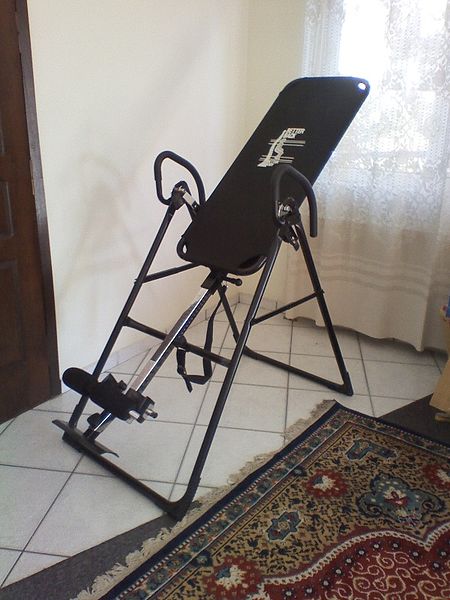
In this quick article, we will first be discussing inversion tables (what the are commonly used for and how to use them safely) and then moving on to discuss folding treadmills. We hope you find the information we share with you today to be helpful for understanding the great benefits these two pieces of equipment can offer.
Folding Treadmills
Folding treadmills (also known as fold-away treadmills and fold-able treadmills) are immensely popular for their unique design which allows them to be a more compact and storage-friendly version of the traditional treadmill.
Folding treadmills also make cleaning your home easier, since instead of having to laboriously work around a traditional bulky treadmill when you sweep, dust, and vacuum, you can instead fold up your treadmill and put ti away in your closet or garage while you clean your house instead.
Basically, home treadmills are an excellent choice if you want a space-saving and storage-friendly piece of equipment that can still offer you a powerful workout.
That being said, folding treadmills are generally also less stable than non-folding treadmills. Of course, that doesn’t necessarily mean that they are technically unstable, simply that they offer less stability than traditional treadmills, which will (or should) always remain steady and free from wobbling or shaking when you run on them.
Ultimately, the decision of whether or not to purchase and use a folding treadmill is entirely up to you, but if you’re someone who lives in a small apartment or home and still wants to be able to get in a good treadmill workout without wasting your time and money on a gym membership, then investing in your own at-home folding treadmill is probably an idea that’s worth considering.
Inversion Tables
An inversion table is a piece of equipment that is primarily used to help ease or relieve back problems. They do this by utilizing gravity as a means of relieving tension and pressure off of compressed joints, spinal discs, and nerves. In most circumstances, a person using an inversion table will be laying at a downwards angle (not entirely upside down as some people believe). Also, you will not be inverted all at once; rather, you will increase your downwards angle in small increments.
Additionally, inversion tables also alter your blood-flow while you’re using them, so you should consult with your primary care physician if you have high blood pressure, a heart condition, a history of strokes or migraines, or any sort of eye disease since these conditions could be affected (and potentially worsened) by the use of an inversion table (because of how your blood will rush to different parts of your upper body fairly suddenly). If you get cleared by your physician to try inversion therapy, you can find reviews of good inversion tables here.
Generally speaking, inversion tables are good for the short-term relief of pain and discomfort associated with conditions such as sciatica or chronic back pain, but using an inversion table is not a permanent cure; it can only relieve your symptoms, not remove your condition.


